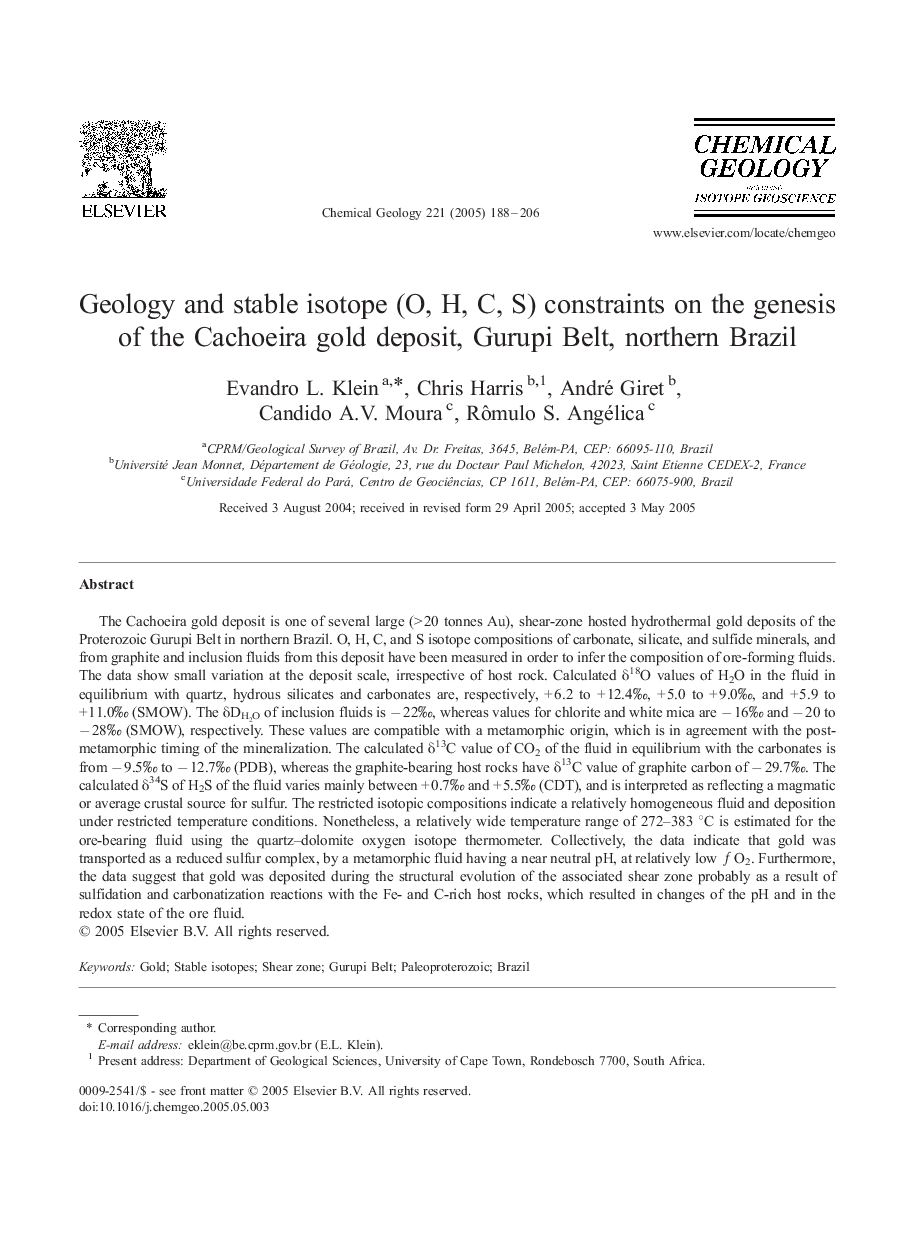| Article ID | Journal | Published Year | Pages | File Type |
|---|---|---|---|---|
| 9529099 | Chemical Geology | 2005 | 19 Pages |
Abstract
The Cachoeira gold deposit is one of several large (> 20 tonnes Au), shear-zone hosted hydrothermal gold deposits of the Proterozoic Gurupi Belt in northern Brazil. O, H, C, and S isotope compositions of carbonate, silicate, and sulfide minerals, and from graphite and inclusion fluids from this deposit have been measured in order to infer the composition of ore-forming fluids. The data show small variation at the deposit scale, irrespective of host rock. Calculated δ18O values of H2O in the fluid in equilibrium with quartz, hydrous silicates and carbonates are, respectively, + 6.2 to + 12.4â°, + 5.0 to + 9.0â°, and + 5.9 to + 11.0â° (SMOW). The δDH2O of inclusion fluids is â 22â°, whereas values for chlorite and white mica are â 16â° and â 20 to â 28â° (SMOW), respectively. These values are compatible with a metamorphic origin, which is in agreement with the post-metamorphic timing of the mineralization. The calculated δ13C value of CO2 of the fluid in equilibrium with the carbonates is from â 9.5â° to â 12.7â° (PDB), whereas the graphite-bearing host rocks have δ13C value of graphite carbon of â 29.7â°. The calculated δ34S of H2S of the fluid varies mainly between + 0.7â° and + 5.5â° (CDT), and is interpreted as reflecting a magmatic or average crustal source for sulfur. The restricted isotopic compositions indicate a relatively homogeneous fluid and deposition under restricted temperature conditions. Nonetheless, a relatively wide temperature range of 272-383 °C is estimated for the ore-bearing fluid using the quartz-dolomite oxygen isotope thermometer. Collectively, the data indicate that gold was transported as a reduced sulfur complex, by a metamorphic fluid having a near neutral pH, at relatively low ÆO2. Furthermore, the data suggest that gold was deposited during the structural evolution of the associated shear zone probably as a result of sulfidation and carbonatization reactions with the Fe- and C-rich host rocks, which resulted in changes of the pH and in the redox state of the ore fluid.
Related Topics
Physical Sciences and Engineering
Earth and Planetary Sciences
Geochemistry and Petrology
Authors
Evandro L. Klein, Chris Harris, André Giret, Candido A.V. Moura, Rômulo S. Angélica,
